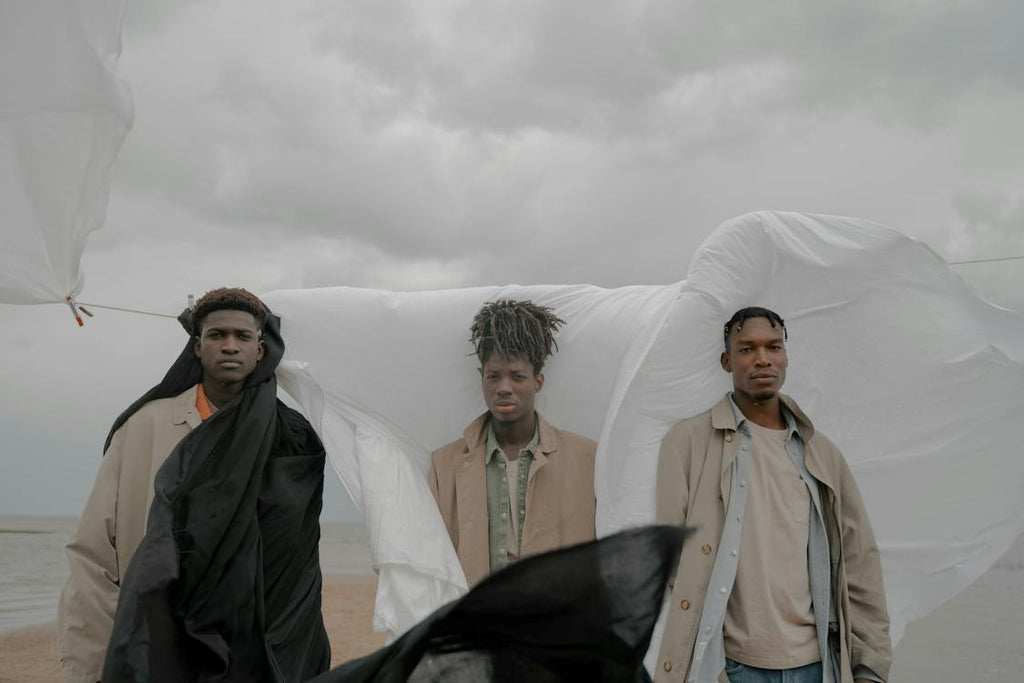Trench Coat vs. Overcoat: A Style and Functionality Comparison
Posted by DANISH FAREED

In the realm of outerwear, two classic garments have stood the test of time - the trench coat and the overcoat. Both pieces are staples in a well-rounded wardrobe, offering distinctive styles and practical functionalities. In this exploration, we will delve into the characteristics, history, and best use cases for these iconic coats.
Trench Coat: A Timeless Classic
Features and Design
The trench coat is a versatile and enduring piece of outerwear that originated from military roots. Known for its distinctive features, including a double-breasted front, wide lapels, and a belted waist, the trench coat has a signature look that exudes sophistication and functionality. It typically falls just below the knee, providing ample coverage against the elements.
Historical Significance
Developed for British soldiers during World War I, the trench coat's design aimed to offer protection from the rain and wind in the trenches. Over time, this military necessity transformed into a timeless fashion statement, synonymous with elegance and urban style. Iconic brands like Burberry have played a significant role in popularizing the trench coat as a symbol of refined fashion.
Versatility in Style
The trench coat's adaptability makes it suitable for various occasions. Whether paired with a formal suit or casual jeans, the trench coat effortlessly elevates the wearer's style. Its water-resistant properties and lightweight construction also make it an excellent choice for transitional seasons.
Overcoat: The Epitome of Elegance
Characteristics and Construction
Unlike the trench coat, the overcoat is designed primarily for warmth and formality. Constructed from heavy fabrics such as wool, cashmere, or tweed, the overcoat is a longer and looser garment that often extends well below the knee. It commonly features a single-breasted front with notch lapels, contributing to its classic and refined appearance.
Historical Evolution
The overcoat has a history deeply rooted in aristocratic and formal wear. Initially a symbol of social status, overcoats were worn by the upper class in the 18th and 19th centuries. Over time, they became more accessible and evolved into a staple of men's and women's winter wardrobes, epitomizing elegance and sophistication.
Formality and Functionality
The overcoat is inherently more formal than the trench coat, making it an ideal choice for business attire or evening events. Its heavier construction and longer length provide superior insulation, making it well-suited for cold climates. While not as versatile as the trench coat, the overcoat makes a powerful statement in more formal settings.
Choosing the Right Coat for the Occasion
Trench Coat: Casual Sophistication
The trench coat shines in a range of casual to semi-formal settings. It complements both professional and leisure attire, making it a go-to choice for daily wear during the transitional seasons. Whether heading to the office or strolling through the city, the trench coat effortlessly blends style with practicality.
Overcoat: Formal Elegance
Reserved for more formal occasions, the overcoat excels in providing a polished and refined look. Its longer length and heavier fabrics make it a must-have for winter events, business meetings, or any situation where a touch of formality is required. Pair it with a tailored suit for a sophisticated ensemble that exudes timeless charm.
Conclusion
In the eternal debate of trench coat vs. overcoat, the choice ultimately depends on the occasion and individual style preferences. The trench coat offers a versatile blend of sophistication and functionality for everyday wear, while the overcoat stands as the epitome of elegance in more formal settings.
Both, however, are timeless classics that have earned their place in the annals of fashion, proving that style and functionality can coexist harmoniously in the world of outerwear.






















